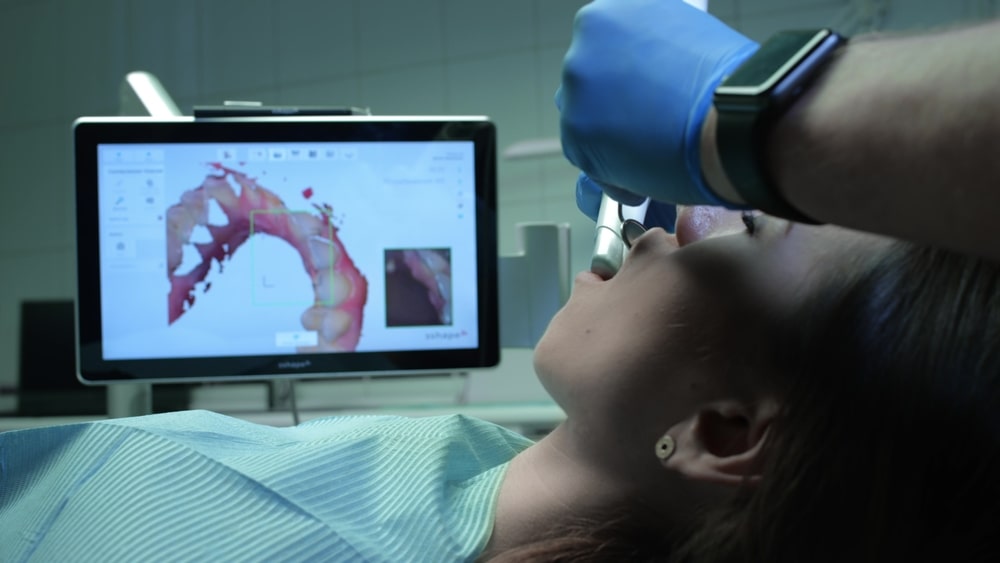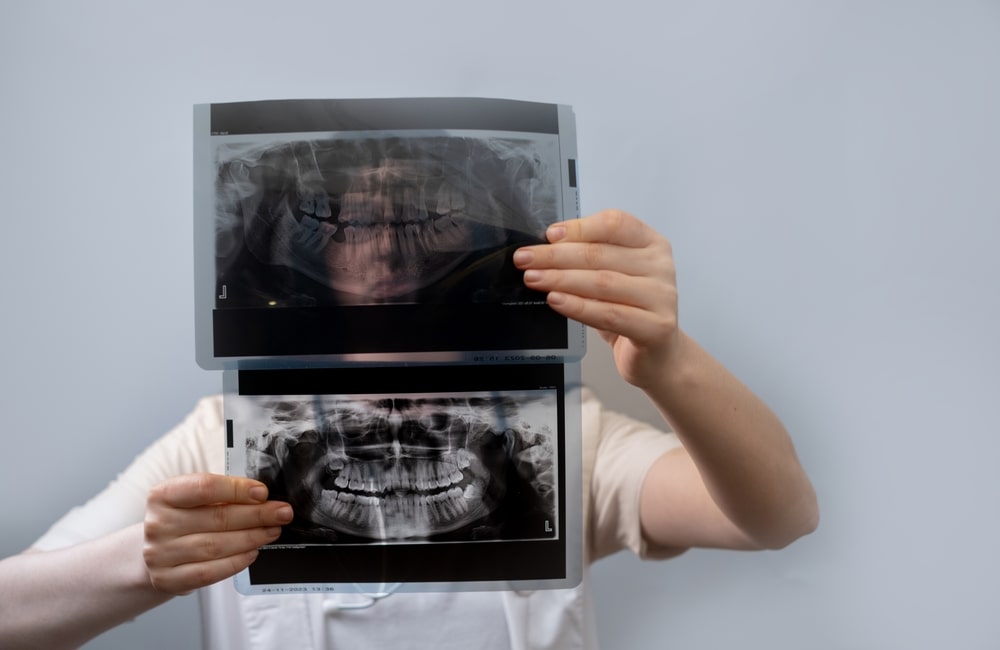Imagine stepping into your dentist’s office, not just with a list of concerns, but with a vivid, personalized preview of your future smile – before any treatment even begins. For many years, achieving a complete dental transformation, known as full mouth rehabilitation, relied heavily on a dentist’s experience and traditional models. While effective, this process sometimes felt a bit like building a house without a detailed blueprint.
But what if you could have that blueprint? What if every angle, every contour, every functional detail of your new smile could be meticulously designed and tested in a virtual world first?
Welcome to the future of dentistry: Advanced Digital Planning for Full Mouth Rehabilitation.
This isn’t science fiction; it’s a precise, predictable, and profoundly patient-centric approach that’s transforming how we restore complex dental issues, turning uncertainty into confidence.
Beyond Impressions: Why We Need a Digital Blueprint
Full mouth rehabilitation isn’t just about fixing a few teeth; it’s about restoring health, function, and aesthetics to an entire dental system.

This often involves a combination of procedures, from dental implants and crowns and bridges to cosmetic dentistry solutions.
Traditionally, this process involved physical impressions, plaster models, and a lot of back-and-forth adjustments.
While skilled hands can achieve remarkable results, traditional methods face inherent limitations:
- Subjectivity: Relying on visual assessment alone can sometimes lead to aesthetic or functional compromises.
- Less Predictability: Changes made mid-treatment can be costly and time-consuming.
- Limited Patient Involvement: It’s hard for patients to visualize the final outcome, leading to anxiety.
The digital revolution in dentistry addresses these challenges head-on, offering a level of precision and predictability previously unattainable.
By creating a “virtual patient,” we can design, simulate, and refine your entire rehabilitation plan with incredible accuracy.
Building Your Virtual Patient: The Foundation of Digital Planning
Think of your “virtual patient” as a digital twin of your mouth, jaw, and even facial structure.
Creating this comprehensive model involves integrating data from several cutting-edge technologies.
1. Capturing the Full Picture with 3D Scans: CBCT & Intraoral Scanners
The first step in our digital blueprint process is gathering highly detailed information about your oral anatomy.
Cone-Beam Computed Tomography (CBCT) Scans
Unlike traditional 2D X-rays, a CBCT scan provides a detailed, three-dimensional view of your teeth, bone structure, nerve pathways, and soft tissues.

2d-mouth-x-ray-scan
It’s like having a GPS for your jaw, showing us everything from bone density crucial for dental implants to the precise location of nerves that need to be avoided during procedures.
This technology significantly enhances safety and precision, especially in complex cases.
2. The Art of the Smile: Digital Smile Design (DSD)
Once we have the foundational 3D data, we move into the aesthetic phase with Digital Smile Design (DSD). This powerful software allows us to virtually design your ideal smile, integrating it harmoniously with your facial features.
DSD isn’t just about making teeth look “good”; it’s about creating a smile that reflects your personality, fits your face, and functions perfectly.
We use high-quality photographs and videos of your face, considering factors like your lip line, facial symmetry, and even how you speak and express emotions.
This is where the “aha moment” often happens for patients! You get to see, discuss, and even co-design your future smile.
Want to make your teeth a shade brighter for teeth whitening or adjust the shape of a particular tooth?
We can do it virtually, getting your feedback every step of the way. This collaborative process ensures the final result is exactly what you envisioned.
3. Understanding Movement: Jaw Motion Tracking & Virtual Articulation
A beautiful smile is only truly successful if it functions well. How your upper and lower teeth meet and move (your occlusion) is critical for comfortable eating, speaking, and preventing jaw pain or excessive wear.

Advanced digital planning incorporates jaw motion tracking to record the unique movements of your bite.
This data, combined with virtual articulators, allows us to simulate your jaw’s dynamics and precisely plan for changes to your occlusal vertical dimension (OVD) – how high or low your bite is.
This ensures that your new teeth will not only look great but also integrate seamlessly into your chewing and speaking patterns, providing long-term comfort and stability.
The Seamless Digital Workflow: From Design to Reality
With all this rich digital data, the planning for your full mouth rehabilitation becomes incredibly precise and predictable.
Step-by-Step Precision:
- Data Acquisition: CBCT, intraoral scans, facial photos, and jaw motion tracking are all gathered.
- Virtual Patient Assembly: All this data is imported and merged into a single, comprehensive 3D “virtual patient” model in specialized software.
- Digital Smile Design: We use DSD to meticulously plan the aesthetics, factoring in your facial features and desires.
- Functional Planning: Using virtual articulators, we design the optimal bite and ensure that the new restorations will function perfectly, preventing future problems.
- Implant Planning & Guided Surgery: If dental implants are part of your plan, we can virtually place them with pinpoint accuracy, considering bone quality and nerve locations. This allows for the creation of precise surgical guides, which act like stencils during surgery, enhancing safety and predictable outcomes. A 2023 study published in PMC NCBI highlighted the effectiveness of interdisciplinary digital workflows in achieving high success rates for complex rehabilitation cases, underscoring the benefits of this integrated approach.
- Provisional Design: We can create virtual “wax-ups” of your new teeth, and even 3D print temporary restorations (provisionals) that you can wear to “test drive” your new smile before the final restorations are made. This is a crucial step for patient feedback and ensuring comfort.
- CAD/CAM Fabrication: Once the design is finalized, computer-aided design and computer-aided manufacturing (CAD/CAM) systems are used to mill or 3D print your custom dental crowns, bridges, veneers, or other restorations from high-quality materials like zirconia. This ensures an exact fit and exceptional durability.
This integrated workflow minimizes surprises, reduces chair time, and most importantly, ensures that your final smile is exactly what was planned and agreed upon.
Why Advanced Digital Planning Matters for You
For anyone considering a significant dental transformation, advanced digital planning offers compelling advantages:
- Unmatched Predictability: We know the outcome before we start, reducing risks and ensuring a higher success rate.
- Enhanced Precision: Every aspect, from implant placement to the shape of each tooth, is meticulously planned digitally.
- Patient Empowerment: You’re an active participant in designing your smile, leading to greater satisfaction.
- Increased Comfort: No more messy impressions, and often fewer visits due to streamlined processes.
- Optimal Aesthetics & Function: Your new smile will not only look beautiful but also chew, speak, and feel natural.
As technology continues to advance, we’re even seeing the integration of Artificial Intelligence (AI) into digital planning.
AI can assist with diagnostics, predict outcomes, and optimize treatment plans, making the process even more efficient and precise, as highlighted by sources like Diagnocat.
This constant evolution ensures that the future of dentistry is brighter, more predictable, and more personalized than ever before.
Your Questions About Digital Planning for Full Mouth Rehabilitation, Answered!
Embarking on a journey like full mouth rehabilitation brings many questions. Here are some common ones about the digital planning aspect:
What exactly is “Full Mouth Rehabilitation”?
Full mouth rehabilitation (also known as full mouth reconstruction) is a comprehensive dental treatment designed to restore the health, function, and aesthetics of your entire mouth. It’s often necessary when teeth are extensively damaged, missing, worn down, or when bite problems (occlusion) are causing discomfort. It can involve a combination of procedures such as dental implants, dental crowns, bridges, veneers, and sometimes orthodontic treatments like Invisalign.
Is digital planning more expensive than traditional methods?
While the initial investment in technology might seem high, digital planning often leads to greater efficiency, fewer appointments, and reduced material waste. The enhanced predictability also minimizes the need for costly adjustments or re-dos. In the long run, the precision and longevity offered by digital planning can make it a very cost-effective and superior choice for complex cases.
How long does the digital planning process take?
The planning phase typically involves a few appointments for data collection (CBCT, intraoral scans, photos) and review sessions to discuss your custom smile design. The actual digital design work is done by the dental team and lab outside of your chair time. Compared to traditional methods, the digital process can often be more efficient, leading to a quicker path to your final treatment.
Can I really see my new smile before treatment starts?
Yes! This is one of the most exciting benefits of Digital Smile Design (DSD). After collecting your data, we can create a virtual preview of your proposed new smile on your own face. You can see how the changes will look, discuss adjustments, and even wear temporary mock-ups (provisionals) to experience your new smile before any permanent work is done. This helps manage expectations and ensures you’re thrilled with the final result.
Is this technology available everywhere?
While advanced digital planning is rapidly becoming the standard for high-quality dentistry, not all practices have invested in the full suite of technologies or the specialized training required. A practice that utilizes CBCT, intraoral scanning, and Digital Smile Design software is demonstrating a commitment to advanced, patient-centric care.
Does digital planning reduce pain or discomfort during treatment?
The planning phase itself is non-invasive and comfortable (e.g., no messy impressions). During treatment, especially for procedures like implant placement, the precision offered by guided surgery (a direct result of digital planning) can lead to less invasive procedures, potentially reducing post-operative discomfort and recovery time. The overall predictability and efficiency also contribute to a less stressful patient experience.
Ready to Explore Your Digital Smile Journey?
At Bur Oak Dental, we believe in combining compassionate, family-oriented care with the most advanced dental technologies available. Our commitment to precision, predictability, and your comfort means we leverage tools like 3D scans and Digital Smile Design to craft not just new teeth, but entirely new levels of confidence and oral health. If you’re considering a significant dental transformation, understanding the power of advanced digital planning is your first step towards a predictable, beautiful, and healthy new smile.
We invite you to learn more about how these technologies can redefine your dental experience.


